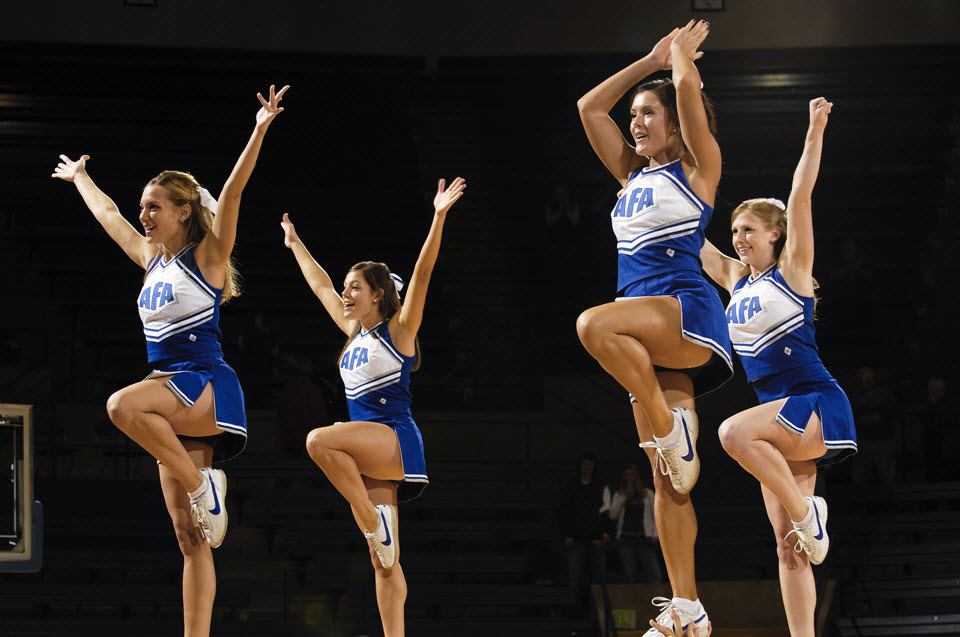No one can deny that cheerleading involves a huge amount of athleticism, skill, flexibility and endurance but can it rightfully be described as a sport? In this essay, my objective is to prove that cheerleading is a modern day sport. Consequently, I will be considering the aspects of this physical activity that meet the requirements of the officials determining what is considered a certified sport.
Of the Office of Civil Rights’ extensive definition for valid sports, the Women’s Sports Foundation dwindles this down to a number of key elements. Firstly, a sport must be ‘a physical activity which involves propelling a mass through space or overcoming the resistance of mass’. It must incorporate a sense of ‘contest’ with or against an opponent. It must be led by explicit rules to ‘define the time, space, and purpose of the contest and the conditions under which a winner is declared’. Finally, the list dictates that a sport acknowledges that its objective is ‘a comparison of the relative skills of the participants’.
Of the above, there isn’t one criterion that cheerleading doesn’t meet. So why is it that there is so much deliberation on this matter? After all, cheerleading is a physical activity that predominantly involves athletes thrusting their peers into the air (propelling mass), supporting them on different areas of their bodies (resisting mass), competing with other cheerleading teams (thus a ‘contest’) and doing all of this whilst abiding by strict rules relating to time limits and mat sizes. It is also important to note that the dictionary definition of a team, which is a term broadly attached to cheerleading, is ‘a group of players forming one side in a competitive game or sport’.
Though it is not necessarily like mainstream sports such as soccer, rugby and tennis (which all have a ‘playing’ element to them), cheerleaders execute their activity with as much energy, skill and passion as any player in the aforementioned sports. If anything, cheerleading is more than a sport as it an artistic performance which combines a range of additional elements – athleticism, dance, music and, dare I say, fashion. Some may say that fashion has no place in sport but I would argue that many famous soccer stars’ successes derive partially from their appearance on the field (ie how their hair is styled, the brand of footwear they are wearing, the tattoos they are displaying, and so on).
I cannot help but wonder if the age old issue of feminism has something to count for in this debate. Do people feel that, because cheerleading teams are predominantly female, they deserve no place in the world of sports? I can appreciate that women in sport are acknowledged in this modern era yet I do not feel that female sporting role models are given as much credit and limelight as some men who are equally successful in their field. My fear is that cheerleading has been sexualised over the years, a theme that appears to begin in high school, and is thus not given the respect it deserves in today’s sporting community.
The sexual objectification of cheerleaders means that these hard-working athletes are often seen as objects to be looked at prior to ‘the big game’. However, the fact is that cheerleaders train hard, are in great physical shape and share a passion for being the best. Though their outfits may reveal their legs and, at times, their backsides, the clothing they wear is a uniform as those worn in any other team sport and are designed to allow the flexibility with their limbs and to stop them from overheating during energetic performances. It isn’t easy to do the splits with long flowing material restricting your legs!
On a similar note, why should cheerleaders shy away from making themselves appeal to others (not necessarily in a sexual way) and to take pride in their physical appearance? Is it very common to see sportsmen exploiting their sexual appeal and featuring topless (or sometimes naked) in calendars and photo shoots. Yet, if a cheerleader was to do the same she may lose any respect earned from being a talented sportsperson. When it comes down to it, strength and motivation are attractive features in both men and women and are qualities that should be embraced by any member of a sports team.

Leave a Reply